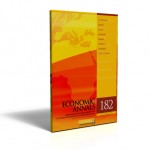MARKET REFORMS AND “ECONOMIC MIRACLE” IN KAZAKHSTAN
##plugins.themes.bootstrap3.article.main##
##plugins.themes.bootstrap3.article.sidebar##
György Simon
Abstract
Kazakhstan’s postcommunist transition is characterised by gradual changes under the conditions of a limited democracy. These changes have embraced extensive price and trade liberalisation, and resolutely promoted privatisation and the building of market institutions, although structural reforms and the struggle against corruption have made little progress. The country’s financial independence was established with the introduction of the tenge in 1993. Transformational recession reached its maximum in 1995, since when only the 1998 Asian and Russian crises have interrupted continuous growth. However, the Kazakh economy is very sensitive to fluctuations in world energy and mineral prices, as the extractive industries, primarily oil and gas, have a crucial role in its development.
##plugins.themes.bootstrap3.article.details##
Keywords
: transition countries, reform policies, economic growth
JEL Classification
P20, P30, O53, E60, O40
Issue
Section
Articles
How to Cite
Simon, G. (2009). MARKET REFORMS AND “ECONOMIC MIRACLE” IN KAZAKHSTAN. Economic Annals, 54(182), 67-92. https://doi.org/10.2298/EKA0982067S
How to Cite
Simon, G. (2009). MARKET REFORMS AND “ECONOMIC MIRACLE” IN KAZAKHSTAN. Economic Annals, 54(182), 67-92. https://doi.org/10.2298/EKA0982067S

